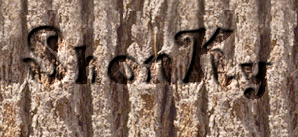Now we have the Body and neck joined together It's just a matter of fixing the top but wait a minute I don't like the top of the box for this one. It's a bit boring and there's some unsightly Ink Stains. ( I normally quite like them to have marks and stains on them but only if they aesthetically pleasing.
Also I have several Thin slices of the Beli left over from Trimming the neck which i decide to laminate together with a thin strip of Bubinga to form the top. This is really going to compliment the neck and headstock.
I can almost get a bookmatched effect even.
Here it is laminated and sanded and put on the top of the box.
I did have a rather small oversight during this procedure I measured the new top against the old top which was left a 4mm gap I will just cut another thin strip of Beli to fill it when I Glue the top on.
Usually My CBG's are sealed with no access hatch to the electronics so I have to decide what to use before I glue the top on. Normally it's a 27mm piezo disc which gives a great authentic and raw blues sound particularly through a little amp but for this one as it's a bit special I have an old tiesco pickup which I'm going to use. This is whats inside the metal casing.
Coincidentally the depth of the pickup is exactly the same depth as the wood top. the Magnet is loose in the middle so I cut a nice piece of thin mahogany which will fit over the top and be attched to the top surface of the lid and another small piece to stick to the bottom just to keep the magnet in place.
Then cut a hole in the top just enough for the pickup part to fit through and glue the wood overhang to the top of the box.
I'm also going to put a single volume control on it so I need to solder this all up and drill the holes in the body for the Volume pot and for the jack socket as the back wall of the guitar is to thick I use a wood auger bit to drill a recess of about 3 mm then drill the normal hole for the socket to fit through.
Soldering is the part I hate the most I'm pretty good at it now but it's taken a lot of practice and swearing and burnt fingers to get the hang of it.
Once this is done I fit the socket and volume pot and then it's time to glue the top on.
Before this is done I maybe would cut some soundholes but as this one has a proper pickup I'm going to leave that for the moment. besides I don't want to cut into the top.
Firstly I glue some strips of wood to the inside top and bottom for the lid to sit on a bit like kerfing on an acoustic guitar. (it will already sit on the sides although sometimes on real flimsy boxes I will do this all the way round.)
Once these have set, time for the top.
I also slot the thin strip of Beli into the gap at the bottom of the guitar.
While this is drying I make a little bubinga cap for a gold control knob that I had in my spares box about. (probably had a mother of peral one originally but long lost)
And also make a bridge out of purpleheart and a strip of fret wire.
And a tailpiece out of some stainless steel sheet offcut. I might replace this one with a brass one as it will go with the gold better but I don't have any at the moment.
Once the top is dry I use filler to fill all the little gaps around the neck and edge of the lid and the gaps where the hinges where and nail holes where the catch was.
Using a Dremel I carve out my name into the pickup cover.
Then It's a matter of final sanding down to 240 grit you could go down finer it depends on how much time you want to spend on it. I reckon on 70 to 80% of the time building is taken by sanding. I also like to round off the edges off the box to make it a little more comfortable to play and hold.
You also need to drill some holes in your headstock ( I actually probably did this earlier but just remembered :-))
Once you have done this it's probably wise to fit the hardware and string it up and see what it sounds like and make sure everything works but I'm going to have faith and finish it with two coats of sanding sealer (Sanding between coats) and two coats of my own formulation low sheen (virtually matt) varnish.
And then once it's dry. attach all the hardware, string it up and finally hear it's voice.


















